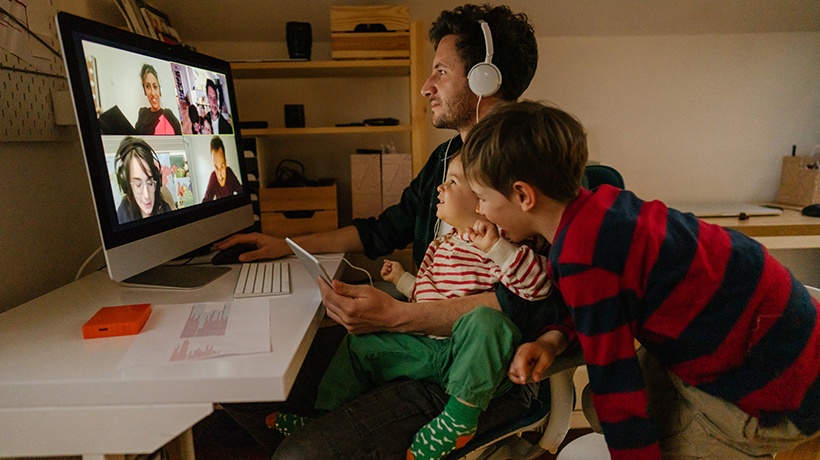Helpful Ways To Keep Your Remote Learners Engaged
COVID-19 has suddenly transitioned the whole world to remote collaboration. Education is no different. Schools, universities, and community colleges across the globe are already in different phases of moving online. At what level of preparedness they were when they started is a different story. But after the initial hustle, most educators have succumbed to the fact that this will be the new normal for quite some time and are now actively working on making their remote classes better.
Needless to say, remote learning needs to be delivered via an online tool. There are many options available—Google Classroom, Zoom, GoToMeeting are just a few names. But, before you get to choosing something, remember there is no one-size-fits-all solution here. What works for someone else might not work for you. So, use your own discretion, evaluate, and choose what fits you and your students best. And once you have chosen something, try and stick to it. Rotating tools frequently might just add to the already ongoing confusion and chaos around. Set aside some time to introduce your students to the tool you are planning to use and you should be good to go thereon.
And now, moving on to some quick and handy tips that could help engage remote learners well.
1. Open The Session In An Exciting Way
It is a good idea to open your virtual classroom with something fun and interesting. This is also useful to get the learners' attention during the first few seconds. Present attention-grabbing facts, fiction, or any other information that could interest learners. You could also throw a challenge that stimulates their thinking.
2. The 10:2 Method
For every 10 minutes of instruction, allocate 2 minutes to your students to process and respond to it. Have them ask any questions they may have or make them write what they have learned.
3. Use Interactivity
Interactivity and engagement go hand in hand. Since the classroom is online and you cannot observe your learners face-to-face, you need a mechanism to ensure that they interact with content and are not distracted. Don’t turn off your learners with the static PowerPoint slides. Turn your content into an interactive parallax or use panning slides to present. Check their knowledge with a fun quiz like cheese quest. The key is to increase and enhance engagement with the use of interactivity. Use a new-age tool like Raptivity 2020 to build such interactive activities rapidly.
4. Enable Closed Captioning
Most presentation and online meeting tools have the option of enabling closed captioning for your session. This eases things in case students are not able to hear you clearly for some reason or not able to follow your accent. PowerPoint for Office 365, for instance, can transcribe your words as you present and display them on-screen as captions in the same language you are speaking or as subtitles translated in another language. This can help accommodate individuals in the audience who may be hard of hearing or are more familiar with another language, respectively.
5. Answer "What’s In It For Me"
“What’s in it for me?” “Why am I learning this?” These are some questions that every student has in the back of their mind. "Because it is in your syllabus," is not the best answer. Giving them examples of how they might apply a skill in real life makes it more relevant and engaging. If possible, show them videos of the skill or learning in use.
6. Encourage Collaboration
Let your learners collaborate with their peers for better learning. Form a group or an online discussion portal where your learners can get together to talk, share their understanding, or even provide feedback. Make use of breakout rooms to get students together for discussions.
7. Throw In A Surprise Element
Crack a joke, ask students to solve a puzzle, throw in random trivia—it is always a good idea to include a surprise element in your online class. It could be something as simple as asking students to get up and take two rounds of the room they are sitting in or having them jump on the spot for 30 seconds. The idea is to break the monotony and keep students engaged.
8. Provide Feedback
It is important to let students know how they are faring while learning remotely. Provide regular feedback to them. Also, encourage students to ask questions and share their insights during the class.
9. Keep In Touch
Since you are already using technology to interact with them during this unprecedented crisis, why not make use of it to know your students better? You may know them through school or college, but you might not know what they like to do when they are not studying. Ask them about their interests, their likes and dislikes. Send regular email notes to them, drop in a hello, check on their health or any challenges they are facing. Schedule one-on-one interactions if needed.
I hope you find the above tips useful as you plan your online classes. And before I wrap up, a closing thought. Determine a specific time for everything and stick to a set schedule. Keeping a schedule helps immensely. Not just for students, but also for you as educators in providing consistency and inculcating discipline. Let me know how you are coping up with remote learning. What tricks are you using to engage your learners? Comment below.








